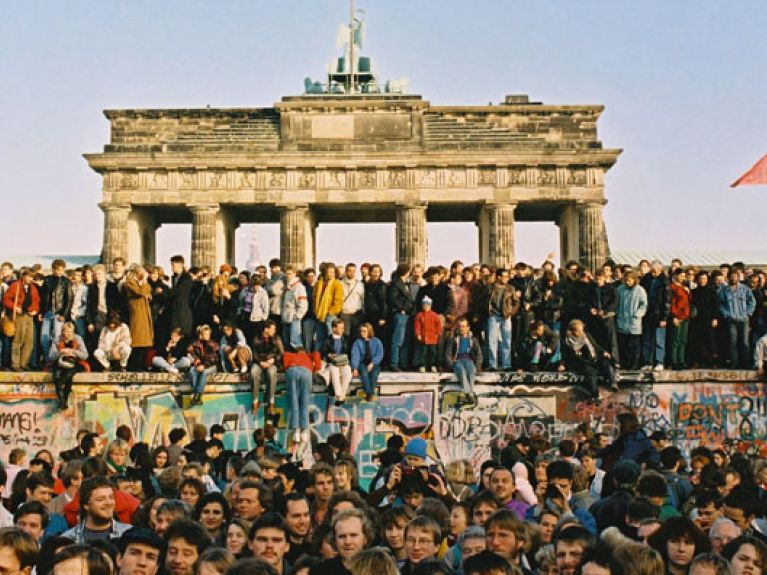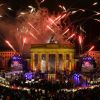Dancing on the Wall
A country rejoices: the Wall that divided Germany finally fell in Berlin on the evening of 9 November 1989. An overview of events, part 1

On the evening of November 9, 1989, the Wall fell in Berlin – and with it the frontier that had divided Germany for 28 years. The very same night, thousands of GDR citizens rushed to the border with West Berlin. Although they had no official order, the border guards opened the crossings. Complete strangers from East and West fell into one another’s arms laughing and crying, spontaneously celebrating the opening of the Wall together. Germany experienced a night of jubilation, a night that was to change the world.
Willy Brandt, the honorary chairman of the SPD who had also been a popular mayor in the western part of the city for many years during the period of division, appeared at the Brandenburg Gate the next morning and announced a little later in front of Schöneberg City Hall: “Now what belongs together will grow together.” The newspaper headlines read: “East Berliners dance the night away on Kurfürstendamm,” “Berlin is again Berlin,” “Germany cries tears of joy – we reach out to one another.”
In the days that followed, millions of GDR citizens headed westward in their Trabi and Wartburg cars – many of them travelled to the Federal Republic for the first time in their lives, visited relatives, explored cities and landscapes – as well as western “shopping paradises” with 100 marks of “Welcome Money” from the Federal Republic in their pockets.
What had happened? On November 9, shortly before 7 p.m., during an international press conference, Günter Schabowski, a member of the SED Politburo, had hesitantly announced a new, liberal exit rule live in front of television cameras. In reply to a question, Schabowski explained that as far as he was aware the policy would come into effect “immediately, without delay”. This news, which had not been approved in that form by the GDR government, spread throughout the GDR at lightning speed and triggered the opening of the border crossings in Berlin – and the fall of the Wall.
This historic day had been preceded by mass exoduses from the GDR during summer 1989 (via Hungary and Czechoslovakia) and remarkable demonstrations by the opposition movement within the GDR in which civil rights activists had publicized their criticisms and their demands for the first time (for example, during the Monday Demonstrations in Leipzig). Both these put a massive strain on the GDR’s structures, especially when it soon became clear that on this occasion the Soviet Union did not have any interest – unlike in Hungary in 1956, Prague in 1968, or Poland in 1980 – in putting down the protest movement by force. The “gentle revolution” produced a kind of paralysis within the GDR government authorities. On October 18, 1989, the resignation of Erich Honecker, the man who had been SED general secretary and chairman of the State Council for many years, triggered a collapse of the SED regime that his successor Egon Krenz was also unable to stabilize.
